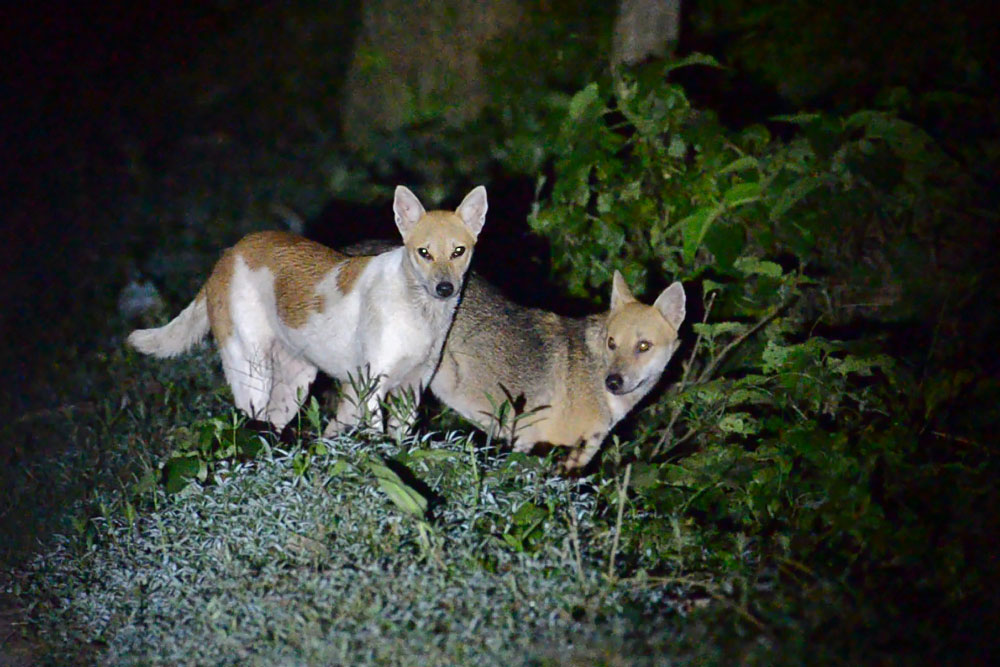 "
"
On the evening of 30th September 2018, I was strolling near a village named Narit, Howrah, West Bengal, to try and get a glimpse of the fishing cat. Instead, I chanced upon a pack of 7-8 Golden Jackals (Canis aureus) that had suddenly appeared out of the darkness in dense bamboo forest.
Among the pack, two had a distinct coat of white and a tinge of orange. Initially I mistook them to be street or feral dogs, but unlike dogs, they had sharp behavioural instincts and features of jackals. I assumed them to be a crossbreed of street dogs and golden jackals, as they showed all the behavioural characteristics plus were roaming with the pack but had the structure and colouration of dogs.
I failed to draw any conclusions regarding their proper identification and would appreciate guidance from canid / carnivore experts.
Conservation India received, upon request, a note from Arjun Srivathsa, a canid scientist from the Department of Wildlife, Ecology and Conservation, Gainesville, Florida. He is project lead for Wild Canids-India Project, a pioneering citizen science and conservation initiative. Here is his response:
“Hybridization between dogs and wild canids is a documented phenomenon across the world. With increase in populations of feral and free-ranging (stray) dogs, it is likely that hybridization is becoming more common. Some wild canid species are more prone to it than others, based on their taxonomic status and social structure. In an on going research study titled the Wild Canids–India Project, we have recorded several reports of jackal-dog and wolf-dog hybrids from many locations across India, including Ambar’s sighting from Howrah. Hybridization may threaten wild canid populations and we need more research on this topic to better understand how to address the issue.”

 CI is a non-profit, non-commercial portal that aims to facilitate wildlife and nature conservation by providing reliable information and the tools needed to campaign effectively.
CI is a non-profit, non-commercial portal that aims to facilitate wildlife and nature conservation by providing reliable information and the tools needed to campaign effectively.



Chosen as 'Picture of the Week'
Hybridization between dogs and wild canids is a documented phenomenon across the world. With increase in populations of feral and free-ranging (stray) dogs, it is likely that hybridization is becoming more common.